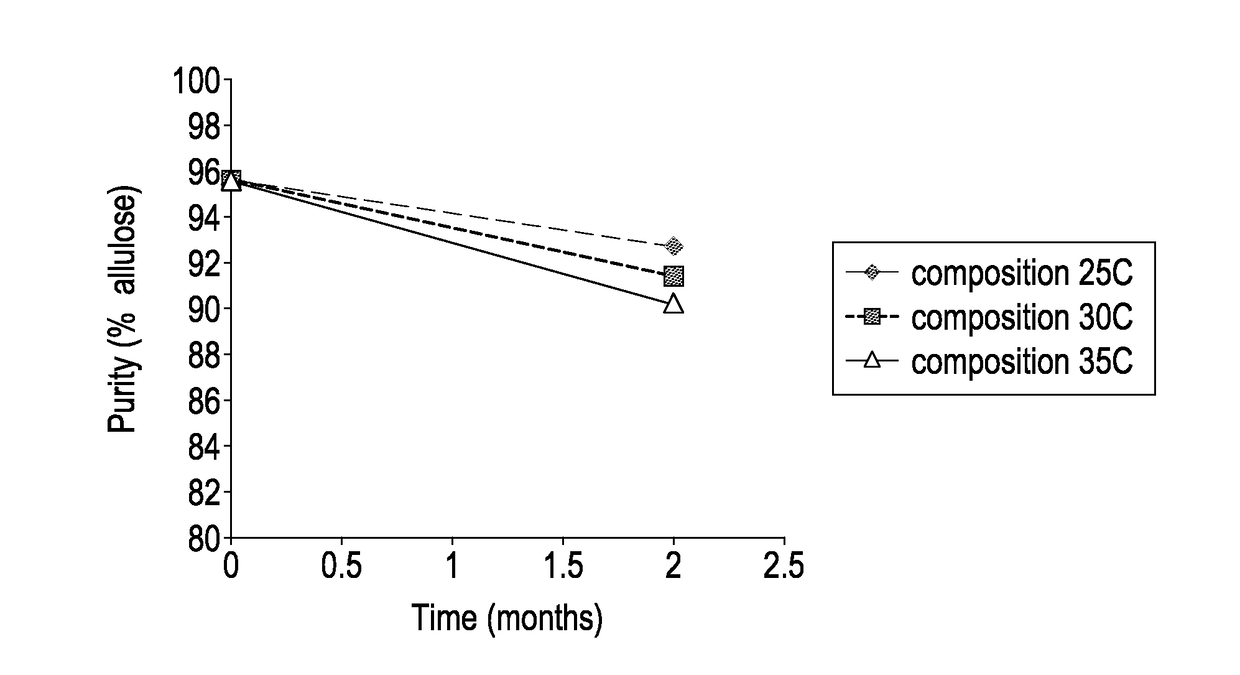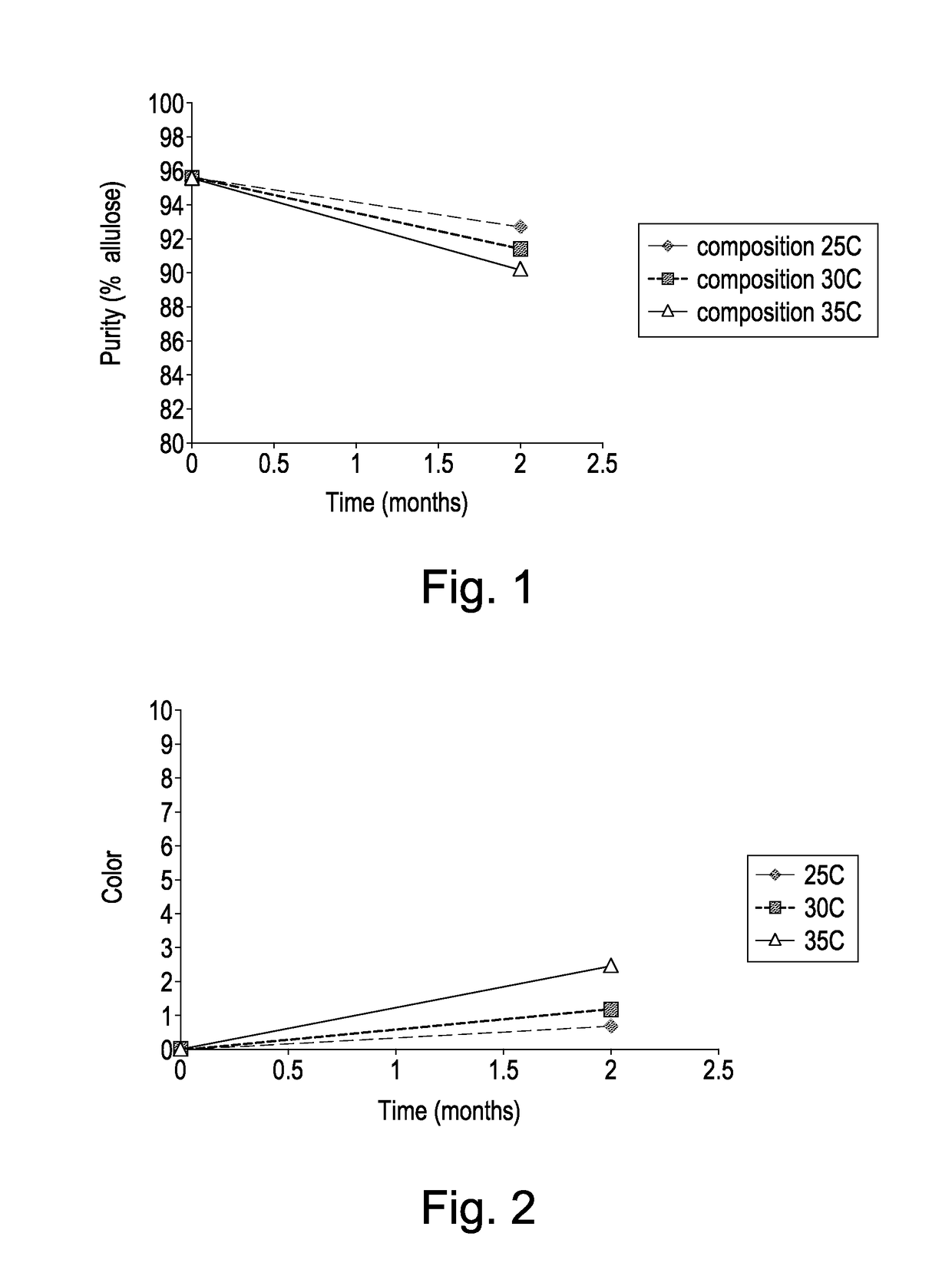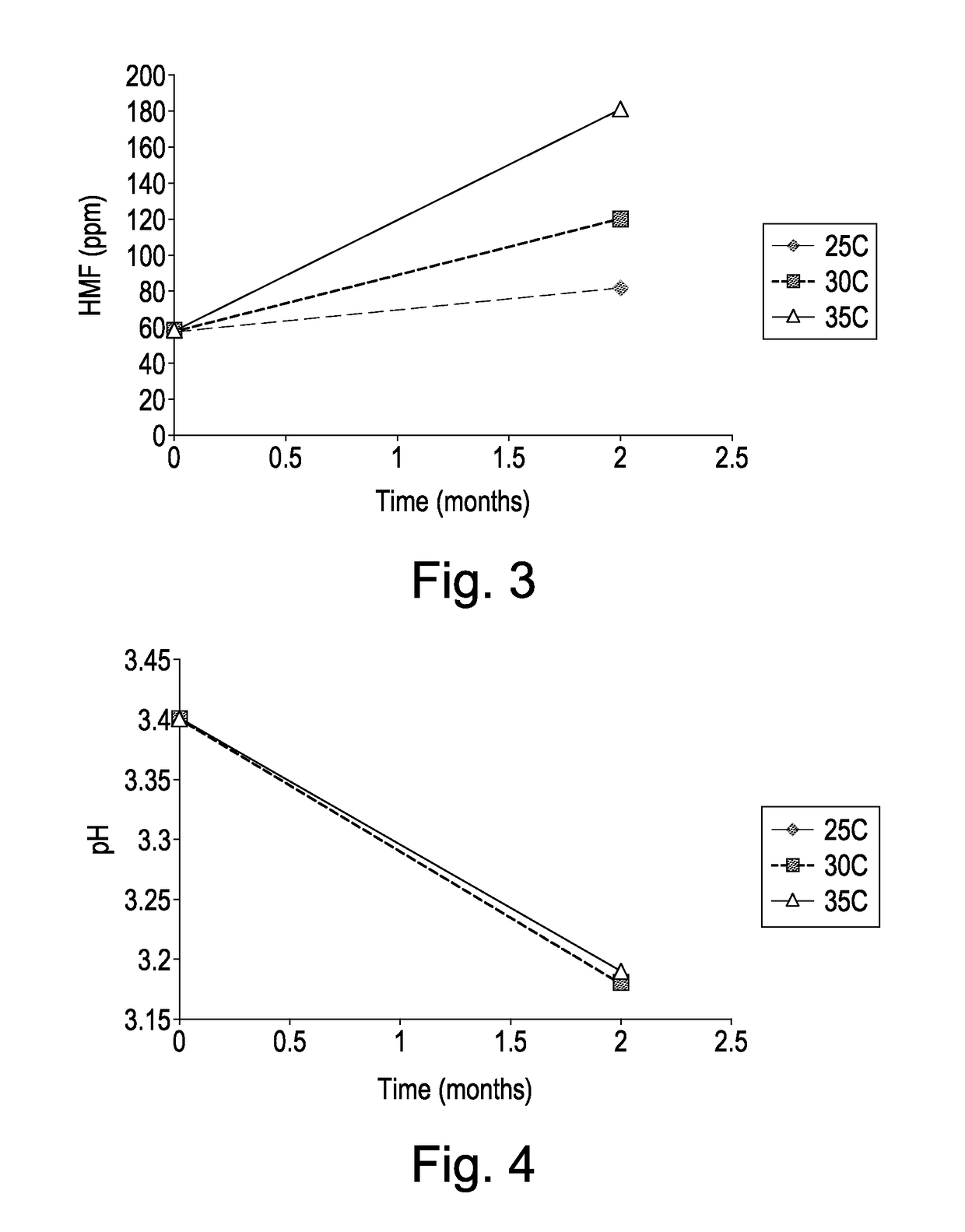Allulose syrups
a technology of allulose syrup and allulose, which is applied in the direction of saccharide production, food ingredient as antioxidant, food ingredient as buffering agent, etc., can solve the problems of gradual reduction of allulose content, insufficient microbial stability, and easy degradation of allulose syrup
- Summary
- Abstract
- Description
- Claims
- Application Information
AI Technical Summary
Benefits of technology
Problems solved by technology
Method used
Image
Examples
example 1
[0127]Each sample consisted of 3500 mL of allulose syrup in a 4 quart (4.54 liter) square plastic container. The sampling was carried out at 0 and 2 months.
Analytical
[0128]Samples were analyzed using methods known to those skilled in the art. The allulose composition was determined by standard HPLC methods, such as the Sacch.03 method set forth by the corn refiners association (http: / / com.org / wp-content / uploads / 2009 / 12 / SACCH.03.pdf). DS was measured by refractive index, pH was measured at a dilution resulting in less than 40% solids, color was analyzed by measuring the absorbance of the syrup at 450 nm and subtracting the background at 600 nm and dividing the result by the path length of the cuvette. HMF, isovaleraldehyde, aminoacetophenone, were analyzed using reverse phase HPLC with UV detection.
[0129]The purity of the allulose composition dropped significantly in the course of 2 months, as shown in FIG. 1. There was a clear trend that higher temperature resulted in a greater chan...
example 2
tability
[0136]Final allulose syrup product samples were subjected to a range of pH and different DS and temperatures. Another series of samples had sodium metabisulfite and sodium citrate added. Separate sub samples were taken at pre-determined intervals and their carbohydrate composition, color, HMF, DS and pH analyzed.
TABLE 2Sample carbohydrate profileDex-Fruc-Allu-Nominaltrose %tose %lose %Others %pHDS %Campaign 10.52.293.04.33.477.0Product
TABLE 3Nominal screening experiments to be run.pHTemp ° C.DS %Additive3.44077—3.45077—3.44071—3.45071—3.54077—3.55077—4.04077—4.05077—4.04077Sodium citrate4.05077Sodium citrate4.04077Sodiummetabisulfite4.05077Sodiummetabisulfite4.54077—4.55077—
Methods
[0137]Samples of starting material were taken. The pH and DS were measured and recorded. One sub sample of each was taken as is, the next adjusted to pH 3.6, another to pH 4.0 and the final one to pH 4.7 using dilute HCl or sodium carbonate. One subset of starting material was diluted to 71% DS. An...
example 3
zation Stability
[0146]Allulose syrups were prepared at 50, 60, 71, 77, and 85% DS and were equilibrated at 25° C., 15° C. and 4° C. These samples were seeded with ˜0.1% crystalline allulose and crystallization was monitored visually and by change in dry solids of the syrup fraction after 1 month of storage.
Results:
[0147]Change in DS is shown in Table 4. A change in DS greater than 0 indicates crystallization, and a larger number indicates a larger amount of crystallization. At 25° C., 77% DS and below did not crystallize substantially, although seed crystals also did not dissolve at 77% DS, suggesting 77% is near the limit of solubility at 25° C. The 85% DS sample did crystallize. At 15° C., 71% DS and below samples did not crystallize, while 77% and 85% did have crystal formation. At 4° C., 60% DS and below samples did not crystallize, while the 71% DS sample had very minor crystallization that did not appreciably affect the bulk syrup DS. Therefore, for storage of a crystallizatio...
PUM
 Login to View More
Login to View More Abstract
Description
Claims
Application Information
 Login to View More
Login to View More - R&D
- Intellectual Property
- Life Sciences
- Materials
- Tech Scout
- Unparalleled Data Quality
- Higher Quality Content
- 60% Fewer Hallucinations
Browse by: Latest US Patents, China's latest patents, Technical Efficacy Thesaurus, Application Domain, Technology Topic, Popular Technical Reports.
© 2025 PatSnap. All rights reserved.Legal|Privacy policy|Modern Slavery Act Transparency Statement|Sitemap|About US| Contact US: help@patsnap.com



